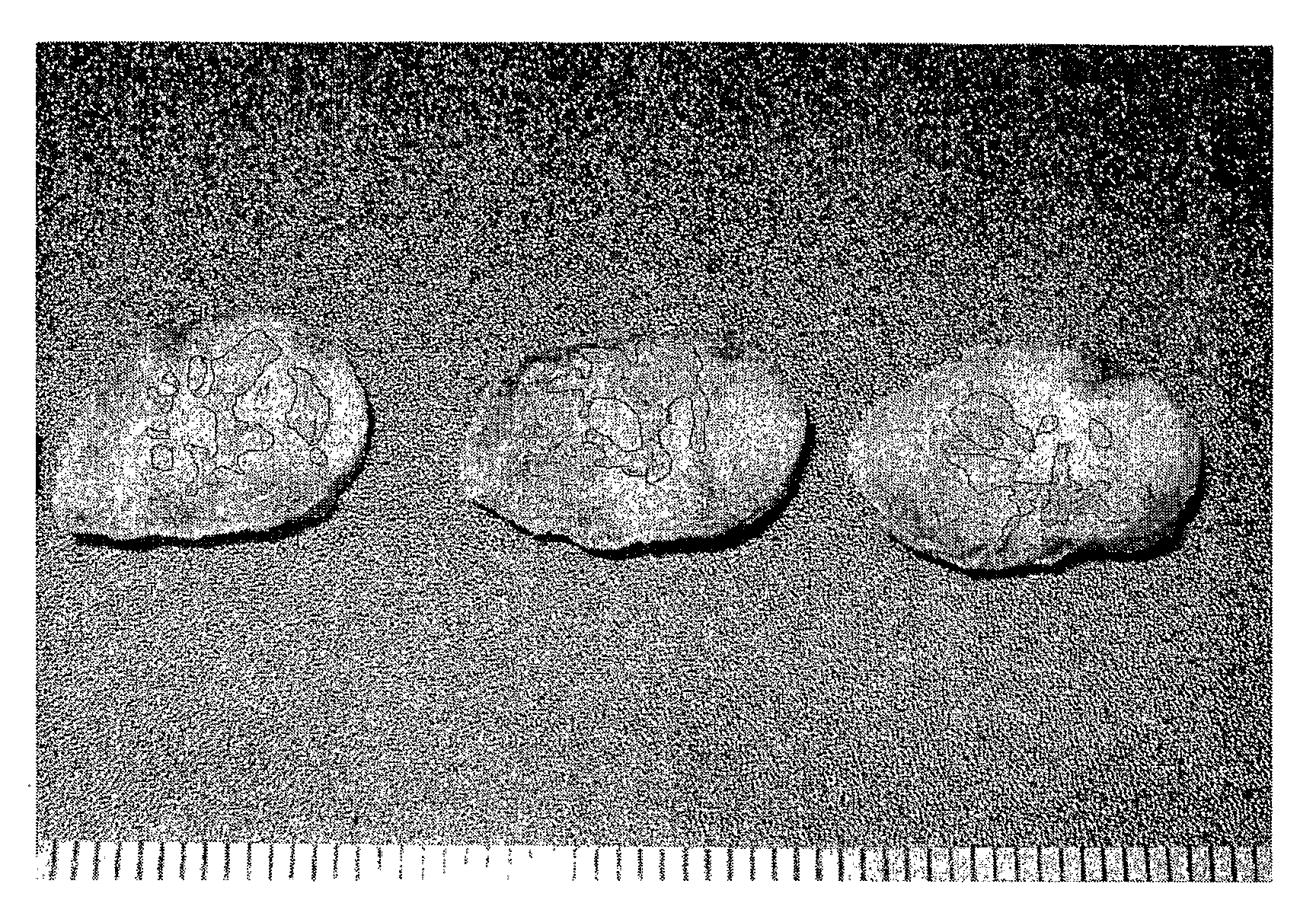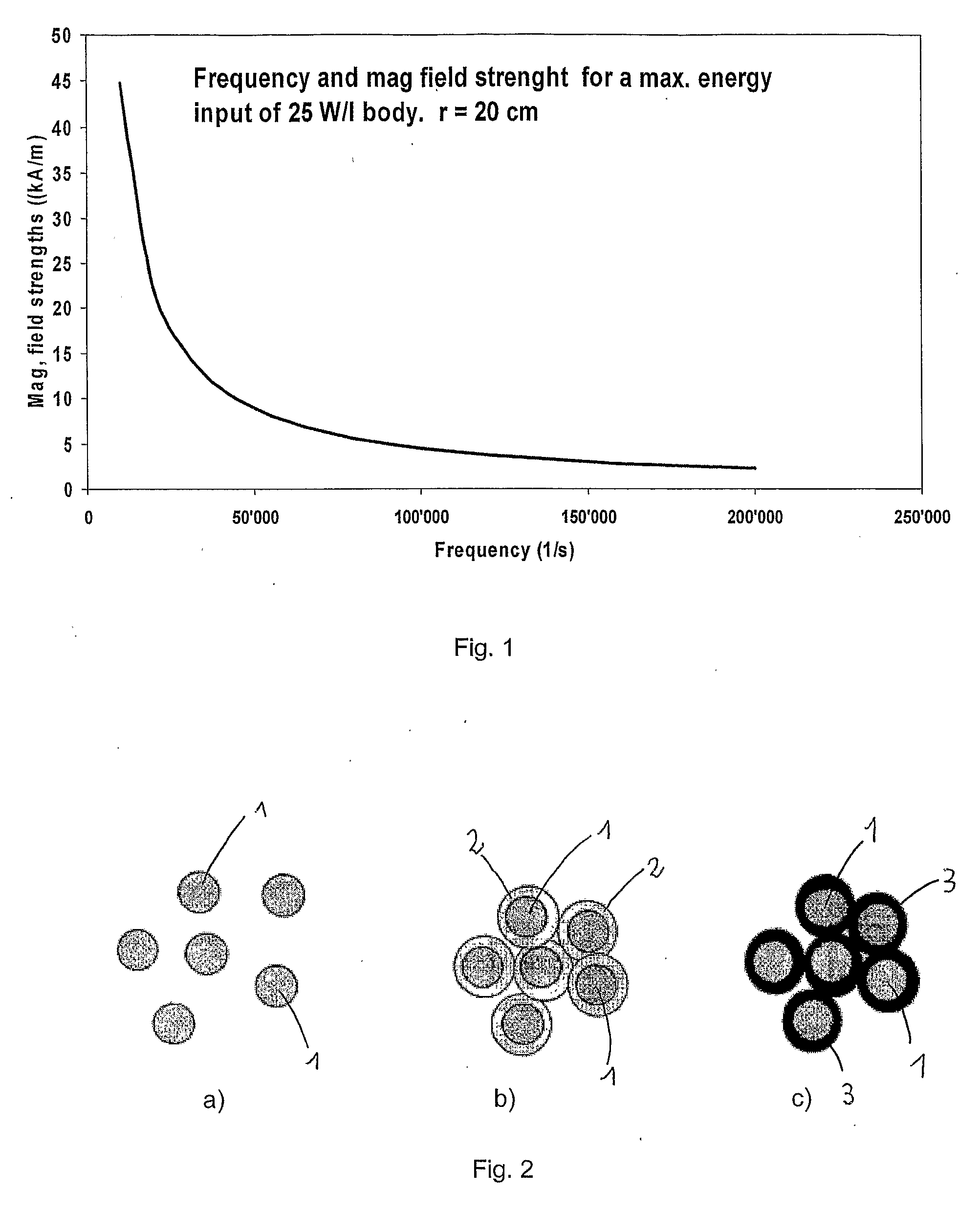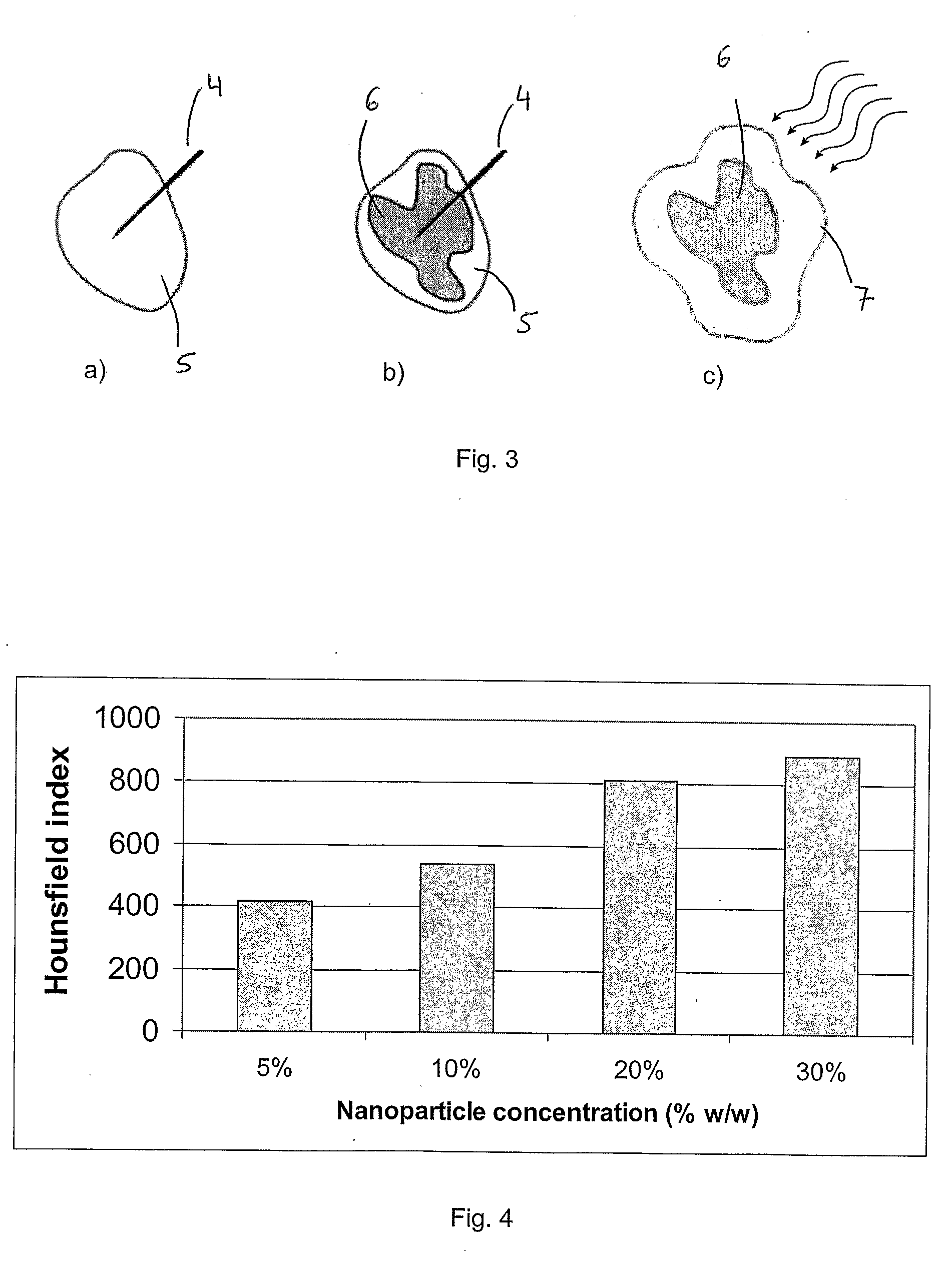Injectable superparamagnetic nanoparticles for treatment by hyperthermia and use for forming an hyperthermic implant
a superparamagnetic nanoparticle and hyperthermia technology, applied in the direction of biocide, drug composition, therapy, etc., can solve the problems of cancer, proliferative diseases, and a tremendous burden on the health-care system, and achieve the effect of reducing the risk of cancer
- Summary
- Abstract
- Description
- Claims
- Application Information
AI Technical Summary
Benefits of technology
Problems solved by technology
Method used
Image
Examples
example 1
Iron Oxide Nanoparticles
[0151]8.65 g FeCl3.6H2O (0.086 M) and 3.18 g FeCl2.4H2O (0.043 M) were dissolved in 370 ml ultrapure water under continuous stirring. 30 ml aqueous ammonia (25 vol %) was added in one step while stirring vigorously. A black precipitate formed instantaneously. This precipitate was sedimented on a permanent magnet and the supernatant was removed. The black sediment was washed three times with 400 ml ultrapure water at a time. The final volume of the dispersion was set to 300 ml by adding ultrapure water. The thus obtained dispersion was transferred to plastic centrifugation tubes and was centrifuged at 5000 g for five minutes. The centrifuged solid was placed in a round-bottomed flask. 60 ml of a 0.35 M aqueous Fe(NO3)3.9H2O solution and 40 ml of 2 M nitric acid were added. This mixture was refluxed for 1 hour. During this step the black dispersion turned brown. The mixture was transferred into a beaker which was placed on a permanent magnet and allowed to cool...
example 2
Iron Oxide Nanoparticles-Containing Beads
synthesis example 1
a) Polymer Solution:
[0153]The polymer solution was prepared by dissolving dry polymer (PVA, Mowiol® 3-83, Clariant) in water and rapidly heating the solution for 15 minutes at 90° C. The polymer concentration of the polymer solution ranged from 0 to 0.2% wt. Ultra-pure water (Seralpur delta UV / UF setting, 0.055 μS / cm) was used in all synthesis steps.
[0154]b) 3.3 ml ferrofluid was mixed with 6.6 ml polymer solution in a round-bottomed flask. The mixture was stirred at room temperature for 5 minutes. 10 ml ethanol and 1.5 ml aqueous concentrated ammonia were added while stirring vigorously. The flask was transferred to a thermostat, which was set to 50° C. 250 ml of tetraethoxysilane were injected in this mixture while stirring. The system was stirred for 1 hour at 50° C., then 25 ml ultrapure water was added and the mixture was allowed to cool to room temperature. The size of the so produced iron oxide silica beads was 50 nm.
Purification
[0155]Depending on the initial PVA concentratio...
PUM
 Login to View More
Login to View More Abstract
Description
Claims
Application Information
 Login to View More
Login to View More - R&D
- Intellectual Property
- Life Sciences
- Materials
- Tech Scout
- Unparalleled Data Quality
- Higher Quality Content
- 60% Fewer Hallucinations
Browse by: Latest US Patents, China's latest patents, Technical Efficacy Thesaurus, Application Domain, Technology Topic, Popular Technical Reports.
© 2025 PatSnap. All rights reserved.Legal|Privacy policy|Modern Slavery Act Transparency Statement|Sitemap|About US| Contact US: help@patsnap.com



